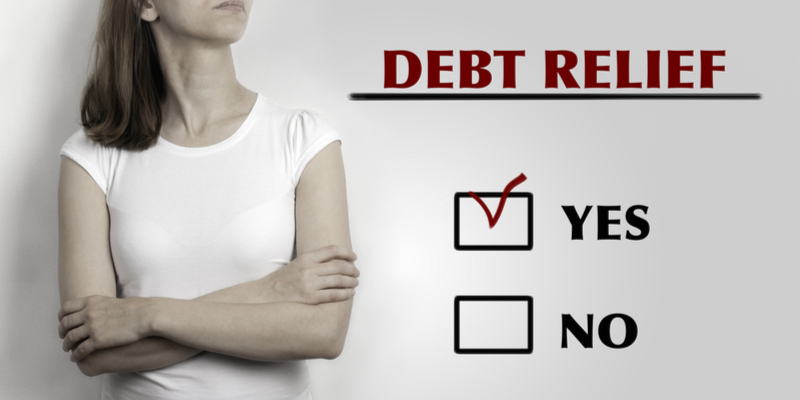In an ideal bankruptcy case, all the creditors are listed thereby maximizing the debts that are discharged. But, oftentimes the debtor hasn’t received a bill from a hospital or other creditor and the debt is not being reported to a credit bureau, so the debtor is unaware. Will the debt be discharged or will the creditor be allowed to collect on the debt? We are frequently asked this question before and after a bankruptcy case and the answer may surprise you. This article discusses what happens to a debt in bankruptcy if the debt is not listed on the bankruptcy statements and schedules.
Whether a debt that is omitted is discharged depends on the chapter under which bankruptcy is filed and the jurisdiction in which it is filed.
Chapter 13
A chapter 13 bankruptcy is a debt consolidation and partial repayment of the debt. Section 1328(a) grants the debtor a discharge of his or her debts upon the successfully completion of the plan for “all debts provided for by the plan or disallowed” with few exceptions. This means that unless the debt was listed and the creditor was afforded the opportunity to file a proof of claim and thereby covered by the plan, the debt will not be discharged.
Chapter 7
Pursuant to § 727(b) of the Bankruptcy Code, the Debtor receives a discharge from all debts that arose before the date of the order for relief under Chapter 7, regardless of whether a proof of claim based on any such debt or liability is filed, unless an exception in 523(a) applies. Under § 523(a)(3)(A), a claim will not be discharged if it was neither listed nor scheduled and the creditor did not have notice or actual knowledge of the case so that the creditor could timely file a claim.
There is a split in the federal circuit courts in interpreting this language. The Third, Sixth, Ninth (Idaho), and Tenth Circuits (Utah) follow the “mechanical approach” and hold that any such debt is discharged by operation of law–even if the debt was not listed. In these circuits there is no need to reopen the case to list the debt and determine dischargeability regardless of the debtor’s reason for failing to list the debt. See In re Judd, 78 F.3d 110, 115 (3d Cir. 1996); In re Madaj, 149 F.3d 467, 471 (6th Cir. 1998); In re Beezley, 994 F.2d 1433 (9th Cir. 1993); In re Parker, 264 B.R. 685, 694 (10th Cir. 2001); see also In re Cruz, 254 B.R. 801, 807 (Bankr. S.D.N.Y. 2000) (summarizing cases). This means if there are no assets distributed to creditors, the debt is discharged even if the debt is not listed, unless the debt is otherwise excluded from discharge (like some taxes, domestic support obligations, or fraud).
In contrast, the First, Fifth, Seventh, and Eleventh Circuits have held that motions to reopen a no-asset Chapter 7 case should be granted to amend the list of creditors—thus subjecting the unlisted creditor to the bankruptcy discharge—unless the omission was the result of fraud or intention. See Colonial Surety Co. v. Weizman, 564 F.3d 526 (1st Cir. 2009); In re Faden, 96 F.3d 792, 797 (5th Cir. 1996); In re Baitcher, 781 F.2d 1529, 1534 (11th Cir. 1986); In re Stark, 717 F.2d 322 (7th Cir. 1983). In these jurisdictions, the Debtor’s basis for failing to list the Debt could be scrutinized as part of the process to reopen the case. While this doesn’t mean that the debt will not be discharged, it adds a level of scrutiny to the debtor’s failure to list the debt in the first place and provides a creditor additional notice of the bankruptcy.
This analysis shows the importance of listing all the debts, if possible to ensure the maximum benefit of discharge. In chapter 7 cases in the jurisdiction the author practices, the determining factor is whether any assets are administered on behalf of creditors. In other words, if you have to turn over any property as part of the case–such as a tax refund–then only creditors listed will be discharged.
What to do if a Pre-bankruptcy Bankruptcy Attempts to Collect
If you were a client of our law firm and have a creditor contacting you or attempting to garnish your wages, you should do the following:
Confirm that there were no assets distributed in your bankruptcy case. You can order a case review.
Confirm that the creditor was listed. Creditors will be listed on Schedules D, E and F of your bankruptcy papers. If you can’t find your copies, you can order copies from our office.
If the creditor was listed OR there were no assets distributed in your case, provide the creditor with a copy of your discharge order. You can order a copy of your discharge order from our office.







